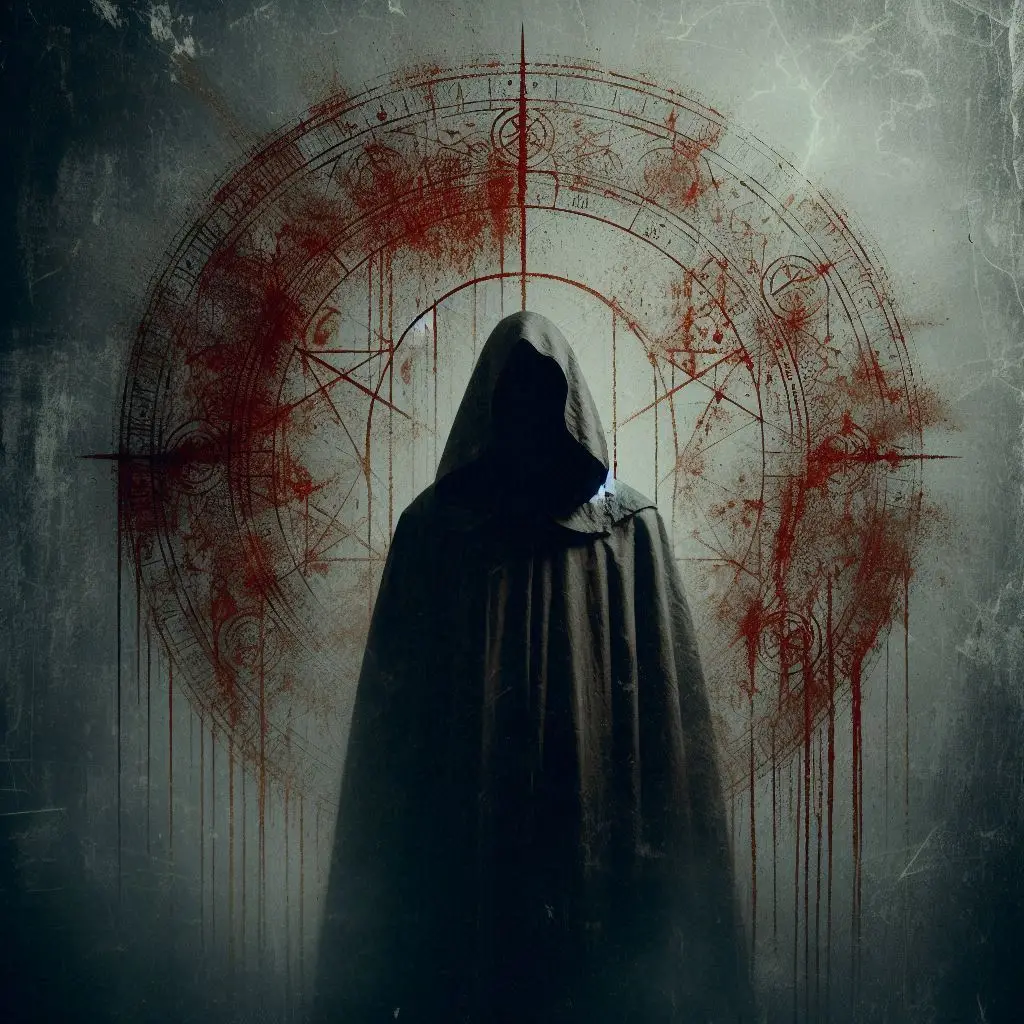Imagine a quiet South African suburb in the mid-2010s. Families tucked away in their homes. Children playing in the streets. It looks like any other safe, ordinary town. But behind closed doors, in rented backrooms and living rooms with drawn curtains, a small group of people was building something terrifying. Something that looked harmless at first—Bible studies, friendly gatherings, prayers. But in reality, it was transforming into one of the most bizarre and gruesome cult stories in modern history.
This is the story of the Krugersdorp Killers.
It’s a story about blind faith, manipulation, and cold-blooded murder. A story where ordinary people became executioners in the name of a twisted belief.
And once you hear it, you’ll never look at “harmless little Bible groups” the same way again.
Part One: The Beginning
The story starts with Cecilia Steyn, a woman in her early thirties. On the surface, she seemed like a fragile soul. She was pale, claimed to have constant health issues, and often spoke about surviving traumatic abuse. But she also carried a strange aura of authority. She told anyone who would listen that she was once part of a powerful Satanic cult. According to her, she had escaped—barely—with her life.
She said the cult still wanted her dead. That she lived every day under threat.
To those around her, she wasn’t just a survivor. She was a chosen one. Someone destined to fight evil on Earth.
But here’s the thing—Cecilia wasn’t telling the truth. She had never been in a Satanic cult. She wasn’t hunted by demons or secret societies. But the people who met her believed her anyway. They believed her because she spoke with passion, with pain in her voice, and with a level of detail that made her lies sound like memories.
And those who believed her—well, they would soon become the soldiers of her own, very real cult.
Part Two: The Recruiter
One of Cecilia’s first and most loyal followers was Marinda Steyn. She wasn’t related to Cecilia, but she shared her last name. Marinda was a high school teacher, a mother of two, and by most accounts, unremarkable. But she became the enforcer in Cecilia’s world.
Her teenage daughter, Le Roux, and her young son, Marcel, also got pulled in.
The group started calling themselves Electus per Deus—Latin for “Chosen by God.”
To outsiders, they were just a Bible study group. But inside, things were getting strange. Cecilia convinced them that they had a holy mission. That God had chosen them to rid the world of evil people. That sometimes, to protect the innocent, you had to kill.
And with that, what began as whispers of prophecy turned into a kill list.
Part Three: The First Kill
The first victim was a woman named Natasha Burger.
Natasha was a church member who once offered support to Cecilia. But later, she had distanced herself. Maybe she sensed something was off. Maybe she just didn’t want to be part of the drama anymore. Either way, Cecilia branded her a traitor.
On a cold day in July 2012, Natasha was brutally murdered in her home. She was stabbed multiple times. Her body was left for police to find, the crime scene messy and shocking.
Not long after, another woman connected to Natasha, Joyce Boonzaier, was also murdered.
At first, police thought these killings might be robberies gone wrong. The crime scenes looked chaotic. Items were missing. But there was something strange about the randomness. It didn’t quite add up.
What investigators didn’t know yet was that these murders were the opening chapter of something far more disturbing.
Part Four: The Spiral
By 2015, Electus per Deus was in full swing. Members weren’t just loyal to Cecilia—they were controlled by her.
She played on their fears. Told them that invisible enemies were everywhere. That demons could possess anyone who doubted her. That betrayal meant death.
She also controlled them with practical things. Many members lived in her apartment, relying on her for shelter, food, and belonging. For those who were lonely, isolated, or desperate for meaning, Cecilia’s words felt like salvation.
And so, when she declared that someone was “evil” and had to be eliminated, nobody questioned her.
The group began luring people in with the promise of friendship, or even financial gain. Then, once the target was trapped, they would be attacked, strangled, or stabbed.
One of their most chilling crimes was the murder of Pastor Reginald Benade. He was a church man, well-liked, and had once been close to Cecilia. But just like others, he eventually distanced himself. That was enough to mark him for death.
The killers staged his murder as a robbery, leaving his body slumped in his car.
By this time, the police were noticing a pattern. People connected to Cecilia were dying—one after another.
Part Five: The Web Tightens
From 2012 to 2016, at least eleven murders were linked to the Krugersdorp Killers.
The group had become confident, almost reckless. They left trails, repeated methods, and even bragged to each other about their kills.
And then, finally, cracks began to show.
Inside the group, paranoia grew. Members began turning on each other. Le Roux, still a teenager, started questioning Cecilia. So did Marcel.
The police, too, were closing in. They noticed the strange connections: all the victims knew Cecilia. All the killers were orbiting around her.
It wasn’t a robbery spree. It was a cult.
Part Six: The Fall
In 2016, authorities finally pieced the puzzle together. Evidence tied the murders back to Cecilia, Marinda, and their inner circle.
The arrests came swiftly. The courtroom became the stage for one of South Africa’s most sensational trials.
Prosecutors described Electus per Deus as a death cult. They painted Cecilia as a manipulative puppet master who thrived on power, control, and blood.
Marinda confessed to her role, admitting to multiple killings. Her own son, Le Roux, testified against her, describing how he had been drawn in as a child and forced to participate in murders. His words were chilling—he spoke about stabbing a victim, about being taught that killing was God’s will.
In 2019, sentences were handed down. Cecilia received thirteen life sentences. Marinda got eleven life sentences. Le Roux, because he cooperated, received a reduced sentence but still decades behind bars. Marcel, too, was sentenced, though her young age at the time of the crimes was considered.
The cult of death had finally been unmasked.
Part Seven: The Twisted Truth
What makes the Krugersdorp Killers story so terrifying isn’t just the number of victims, or the brutality of the murders. It’s how ordinary people became executioners under the influence of one woman.
Cecilia never killed with her own hands. Instead, she killed with her words.
She convinced others to believe in a fake war between God and Satan. She manipulated mothers into sacrificing their children’s innocence. She created a world where stabbing someone wasn’t murder—it was “divine justice.”
And in that way, Cecilia Steyn embodies the darkest truth about cults: they don’t need armies, or money, or even weapons. They only need belief.
The Aftermath
Today, Krugersdorp is still haunted by what happened. Families of the victims live with unanswered questions: How could their loved ones have been targeted for simply leaving a friend group? How could ordinary teenagers have been drawn into such horror?
The story of Electus per Deus is a reminder that evil doesn’t always come with warning signs. Sometimes, it wears the mask of faith. Sometimes, it looks like a Bible study in a living room.
And sometimes, it hides in plain sight, waiting for the moment when belief turns into blind obedience.
Closing
The Krugersdorp Killers believed they were chosen by God. But in reality, they were chosen by Cecilia. And Cecilia’s god wasn’t holy—it was power.
A power that demanded blood.
A power that turned mothers into murderers, children into killers, and friends into executioners.
The cult of death is gone now. Its leaders will die behind bars. But its story will always remain, a chilling example of what happens when lies become truth, and truth becomes twisted beyond recognition.
Because at the end of the day, the scariest cults aren’t the ones in movies or history books.
They’re the ones you never see coming.
💀
That’s the story of The Krugersdorp Killers—Electus per Deus, the cult of death.




